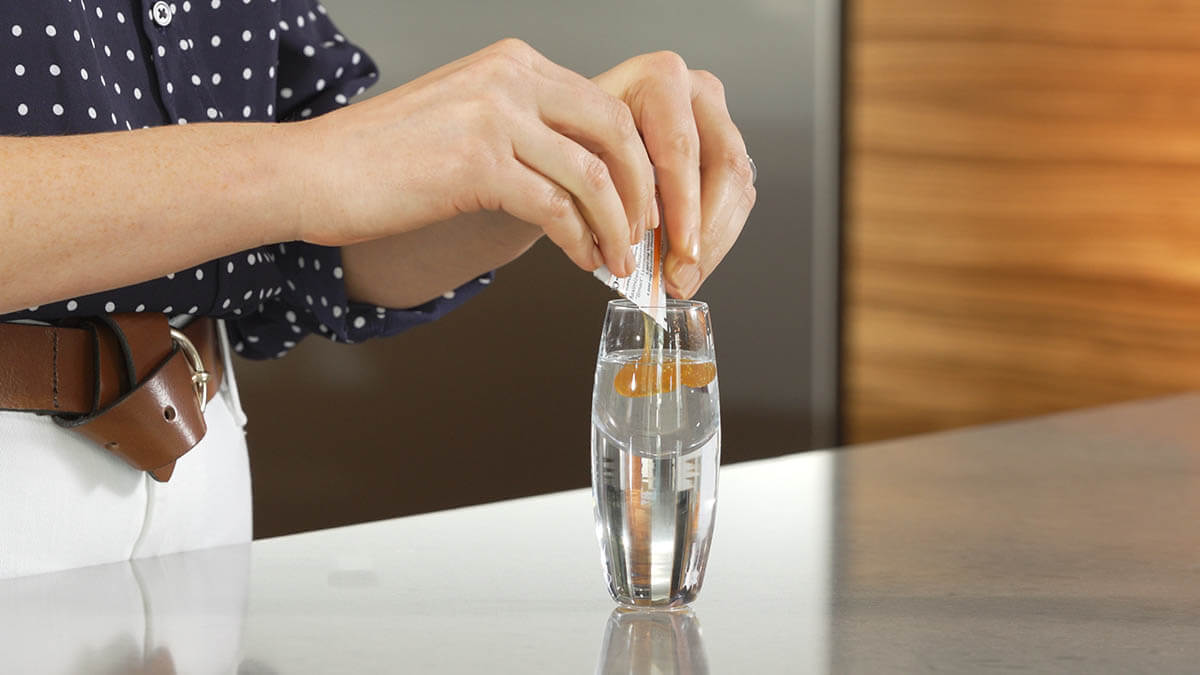
Liposomal Vitamin C is sodium ascorbate wrapped in microscopic double-layered bubbles made of essential phospholipids that transport the vitamin into the bloodstream and the cells. In layman's terms, liposomal Vitamin C offers a better way to absorb Vitamin C.
What makes up liposomal Vitamin C?
The aforementioned bubble is known as a liposome. It’s made of dietary phospholipids that are critical to our overall health, but that our bodies do not produce. The phospholipids are compounds with phosphate heads and fatty acid tails. The phosphate heads are attracted to water while the fatty acid tails are repelled by water. When phospholipids are in water, the tails turn away while the heads turn toward the water. The phospholipids form a double layered sphere that is nearly identical to the membranes that surround each of your cells.
When you put a water-soluble nutrient, like Vitamin C, into the water (or water-based solution), the phospholipids form this double-layered bubble around the nutrient, encapsulating it. Thus the term liposomal encapsulation.
The liposomes give liposomal vitamin c a liquid or gel-like consistency.
How liposomal Vitamin C works
Because of this composition, liposomal Vitamin C can pass from the intestinal wall into the bloodstream. The liposomes then carry the Vitamin C to the cells. Due to their composition nearly matching that of the cell membrane, the liposome can assimilate into the cell membrane and drop off the Vitamin C in the cell where it is needed.
Why liposomal Vitamin C?
Vitamin C is difficult to absorb in high doses. It’s water-soluble, so your body can’t store it. You just excrete any excess. When you take traditional Vitamin C supplements, you need transporter proteins (SCVT) to carry the Vitamin C from the small intestine to the bloodstream. Then you need more transporter proteins to carry it from the bloodstream to the cells. The problem is that you don’t always have a lot of these transporter proteins, so when you take a large dose of Vitamin C from a regular supplement, most of the Vitamin C cannot get rides on the transporter proteins. The Vitamin C gets stuck in the intestines and gets excreted, which is why many people who take large doses of Vitamin C experience gastric upset. Much of the rest of the Vitamin C gets left behind in the bloodstream from where it is excreted, leading to the “vitamins are just expensive urine” comment.
Liposomal Vitamin C bypasses this restrictive nutrient transport system and offers a better way to absorb vitamin c from oral supplements.
When was liposomal Vitamin C invented?
Liposomal encapsulation technology has been around since the 1960s. The pharmaceutical industry has been using it for drugs that absolutely must get to the cells intact, like cancer medications. It wasn’t until the early 2000s when LivOn Labs founder Les Nachman came across the technology when trying to find a way to make high-dose Vitamin C accessible to everyone that he discovered it could be used for Vitamin C. The process for encapsulating Vitamin C is different than encapsulating many pharmaceutical products, so it took a couple years for Les and his team of scientists and formulators to find a process and formula that effectively encapsulated Vitamin C.

